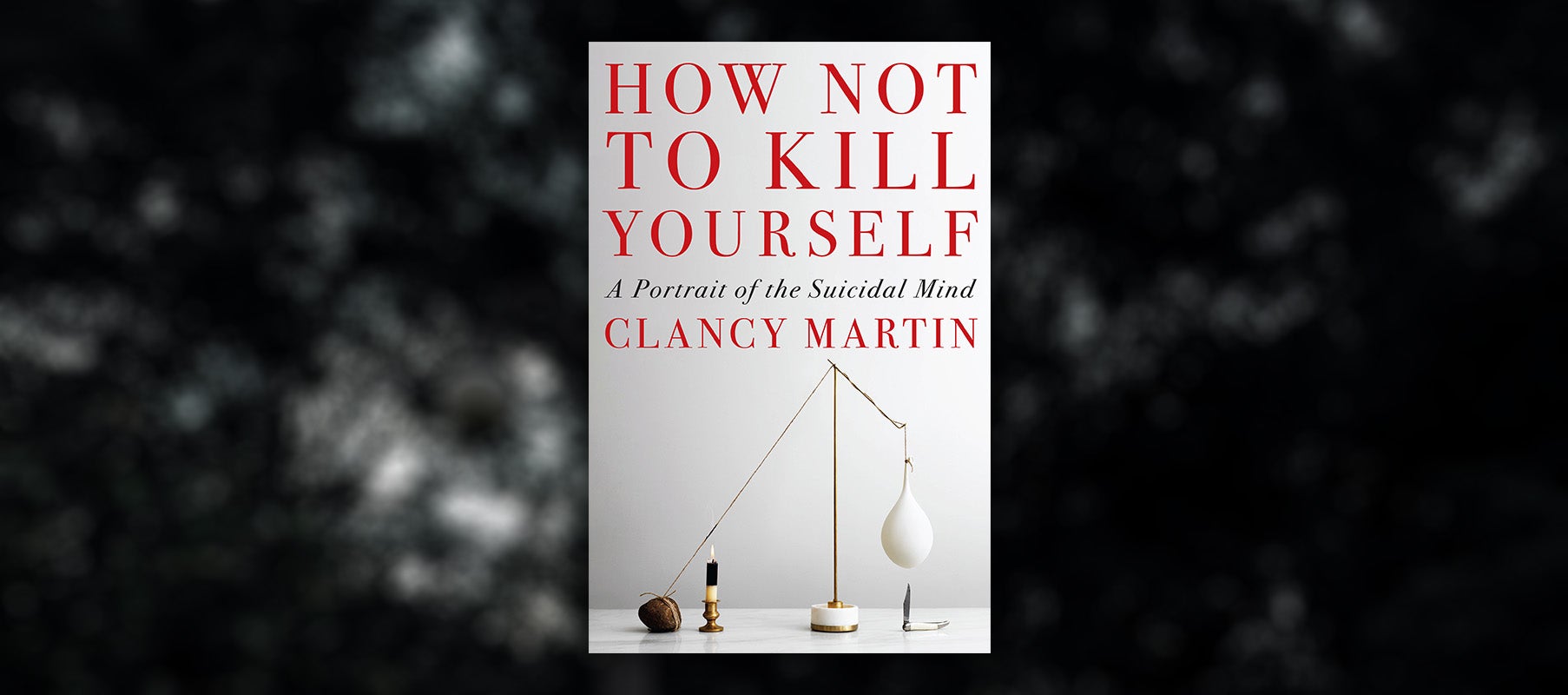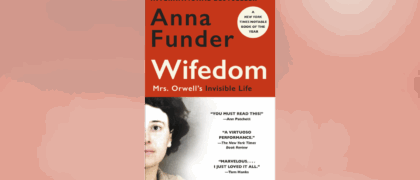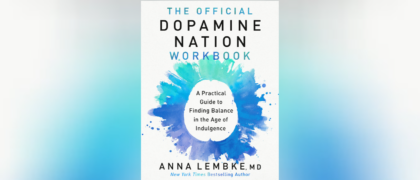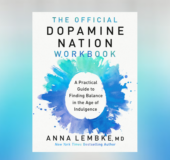In How Not to Kill Yourself, Martin chronicles his multiple suicide attempts in an intimate depiction of the mindset of someone obsessed with self-destruction. He argues that, for the vast majority of suicides, an attempt does not just come out of the blue, nor is it merely a violent reaction to a particular crisis or failure but is the culmination of a host of long-standing issues. He also looks at the thinking of a number of great writers who have attempted suicide and detailed their experiences (such as David Foster Wallace, Yiyun Li, Akutagawa, Nelly Arcan, and others), at what the history of philosophy has to say both for and against suicide, and at the experiences of people who have reached out to him across the years. The result is a work that powerfully gives voice to what to many has long been incomprehensible, while showing those presently struggling with suicidal thoughts that they are not alone, and that the desire to kill oneself—like other self.
TW: SUICIDE
Prologue: Why I Wrote This Book
The last time I tried to kill myself was in my basement with a dog leash. As usual, I did not write a note. I carried a green leather-and-wood chair from my office down there. My dog watched from the stairs; she is afraid of the basement. I took the heavy blue canvas leash, looped it over a beam, made a noose by snaking the leash through the handle, latched it and checked it for strength. I stood on the green chair and put the noose around my neck. Then I kicked the chair away like the gentle old institutionalized suicide Brooks Hatlen does toward the end of The Shawshank Redemption. I hung there, kicking. But I wasn’t dying, I was just in terrible pain. Hanging yourself really hurts. I had forgotten that, though I’d tried it before, because I’d recently spent some time reading about people hanging themselves and it sounding so easy. Other people manage to do it from a doorknob sitting down! I started to panic, I resisted the panic, I panicked some more, and in a moment that I can’t exactly recall, I lifted myself up and got out of the leash. I dropped to the floor and lay there for a while. I still haven’t moved that chair back upstairs. It’s too spooky, and I don’t want it in our house.
Later that day I spoke to my wife on the phone—she was away on a trip—and she asked me what was wrong with my voice.
“I have a sore throat,” I said.
“Make yourself some ginger and honey tea,” she said. “It sounds like you’re coming down with something.”
“Uh huh,” I said.
My throat hurt for another week, and several of my students asked me what I had done to my neck. The bruising was flagrant. I told them “Oh, it looks worse than it is,” and avoided the question.
I probably could have told them the truth. But it’s one thing to write about suicide and your suicide attempts and have those easily available to your students on the internet—students do google their professors—and quite another to look a student in the eye, with the black-and-blue evidence on display, and say: “Oh I tried to hang myself a couple of days ago.” Even if there were no professional consequences (and I suspect there may have been), I’d worry about laying that kind of weight on the minds of my students, and also about the possibility that it might encourage one of them who was already suffering from depression or having suicidal thoughts to make a bad choice.
Here’s the thing: I have lived nearly all of my life with two incompatible thoughts: “I want to kill myself” and “I’m glad that I’ve failed to kill myself.” I’ve never thought, if only I had successfully killed myself—and I’ve tried many times—I would have been spared all this. When I’m feeling that way, I simply think: ok then, go kill yourself now. Or rather I tend to think very concretely, like: I’d better just hang myself now, because I don’t have a poison that I want to take, and if I order one by the time it gets here I’ll have lost my nerve. And it’s important that I do this right now, while my thinking is clear.
Of course I’m not always thinking like this. Right now, for example, as I write this sentence in the winter of 2022, I don’t want to commit suicide, and I’m very glad that I’ve always failed. But even if and when the thought should come back—yes, now I must kill myself—I will still be glad that I was unsuccessful, because all of those failed attempts predate good things that have happened subsequently: most importantly, the births of my children.
I realize how bizarre it sounds to simultaneously be thinking that I have to finally kill myself while at the same time knowing it was lucky that my prior attempts had failed. If my past lack of success allowed me to go on living and create and experience good things as a result, shouldn’t that logic hold true moving forward? Can’t I learn that following this impulse is a mistake? Maybe I am learning, slowly. But when I’m gripped by the desire to die, I don’t believe there are more good things coming down the road. More to the point, regardless of what’s coming down the road, I think that my still being here will only make matters worse.
Holding two incompatible thoughts in one’s head in this way is not as unusual as it may seem: it’s the essence of self-deception, and one of the many kinds of deep irrationality that make human beings the extremely interesting creatures we are. “Do I contradict myself? Very well then, I contradict myself (I am large, I contain multitudes).” Walt Whitman’s famous observation, applies not just to our happy life-affirming thoughts but also to our miserable, self-destructive ones.
Being divorced with children is an easy example of how this kind of thinking works. I feel ashamed and regretful about my two past divorces. If I could, I would go back and correct the mistakes I made in those marriages and be a better husband. But at the same time I recognize that I am so grateful to have been married to all three of my partners, and especially for the children that came from those marriages. If I hadn’t divorced my first wife and subsequently remarried, I wouldn’t have my daughters Margaret and Portia. And if I hadn’t divorced my second wife, I wouldn’t be married to my wonderful wife Amie and wouldn’t be father to my children Ratna and Kali. Amie and my five children are my main reason for living. Often, they feel like my only good reason.
That said, today I’m glad I am alive. I am grateful that, try as I might, I’ve never succeeded in killing myself. And that’s one of the reasons I wrote this book: I believe that for the vast majority of people suicide is a bad choice.
I definitely understand the desire to kill oneself. Not merely wanting to die but wanting to actively take my own life is among my earliest memories. And while the impulse ebbs and flows, there have been few days in my life, and definitely no weeks, when I haven’t thought: it’s too much, I need to end it. And many times, thinking this way, I have tried to kill myself and failed. (I’m a comical figure in the history of suicide, a perennial fuck-up who seems to always get lucky and keep on going.)
A friend of mine WhatsApped me recently to say that in his experience suicidal thoughts “are easy to come by, but also easy enough to step away from.” He was emerging from a very difficult summer, as he told me, where he had truly been close to killing himself almost every day.
This is another reason I wrote this book. There are certain secrets about killing oneself that are only known by those of us symparanekromenoi who have lived with the thought of suicide in a daily way, and especially by those of us who have tried to kill ourselves and failed. The saddest of the bunch are those like me, who have tried and failed repeatedly, and we know a few more secrets still. Some of these are jokes we tell each other in psychiatric hospitals. “The one person you can call to save your life when you’re about to kill yourself is the only person you can’t call, because you’ve already threatened to kill yourself to that person a hundred times.”
Some of these secrets are like the ones told by Anne Sexton in her poem “Suicide Note”:
I could admit
That I am only a coward
Crying me me me
And not mention the little gnats, the moths,
Forced by circumstance
To suck on the electric bulb.
What is Sexton confiding here? A few things. First, that yes, there is some truth to what people say, that the suicide is a coward, and that, more importantly she knows she is a coward, she considers herself to be a coward, she wishes she were one of these brave hearts who could carry on marching despite the pain and discouragement and countless obstacles of life. She also confesses the connection between her cowardice, her suicide and her vanity, with the “me me me,” when every suicide knows that she will be reproached with selfishness, and that the life we have does not entirely belong to us alone, but also consists of our obligations to others. “Me me me” is a terrible and humiliating thing to say, think, or feel, and yet there it is, a voice that is loud in the experience of living for everyone—who hasn’t fearfully or defiantly thought: well, if I don’t look out for me, who will?—and is screaming in your ear when you are deciding to end your life. The “me me me” makes the act possible—how could I kill myself if I were really only thinking about you?—but also we do it to stop hearing that “me me me,” to escape that once and for all. Finally she is also insisting that—and I will have more to say about this—it’s not just the cowardice and the selfishness, there is also what Freud (following Schopenhauer) called the death drive, the very basic and primitive need to “suck on the electric bulb.”
Sexton, who died by suicide one month shy of her forty-sixth birthday, tells a lot of secrets about suicidal thinking in her poetry, and certainly her brilliant poems should be recommended to anyone who wrestles with the desire to die—but, I want to immediately add, they should probably only be read by someone who is feeling pretty steady on her feet, suicide-wise. That is to say, in the honesty and despair of Sexton’s writing about her suicidal desires, there is also a kind of romanticization of killing oneself that is dangerous for a vulnerable person to read. If one of my students came to me and said, “Hey, I’ve been struggling with thoughts of self-harm, do you know of a book that can help?” I have a few different books and writers I might recommend (there is also quite a bit more I would want to talk about with this student, naturally), but one of them absolutely would not be Anne Sexton. Nor would I suggest David Foster Wallace, Nelly Arcan, or Edouard Leve: these are writers we’ll discuss later in this book who know about suicide and write about it in great detail. They understand it so well in part because they attempted suicide and were ultimately successful.
I was recently trying to discuss an argument in this book with one of my closest friends, who is, like me, a trained a philosopher. At one point I complained to her that “I’m not allowed to mention the book or even its topic to you.” She replied: “It’s not that I don’t like the topic or I don’t care about the book. I’m just squeamish.”
Suicide is a tough topic, perhaps a taboo topic even today, and indeed most people are reluctant to discuss it. Alcohol and drug addiction used to be this way, and in some ways still are (thus Alcoholics and Narcotics Anonymous); depression and other forms of mental illness used to be this way, and in some ways they still are (thus the justified celebration when world champion gymnast Simone Biles, for example, talked openly about her struggles with mental illness); it wasn’t so long ago that admitting to being gay was also taboo in this way, strange though that may seem to us now (and, depending upon your cultural context, it may still be). A close friend’s sons recently killed himself, and even I have trouble talking to her about it, despite having spent the last thirteen years reading and writing about suicide, and the last few years writing this book.
But suicide is all around us, and we have to talk about it. And the truth is we all know something about suicide, if we are willing to be honest with ourselves. I used to tell my students that if we had a switch on our bellies that we could flip to end our lives no one would make it to age eighteen. That’s why it’s particularly important for me to be as honest with you as I can about my own desire and attempts to kill myself. If I’m bullshitting you, you’ll know it. Because of course at some level it must be easier not to live. It doesn’t help matters that the most negative emotions are also the most sure of themselves. Happiness and security are notoriously uncertain and fragile states. But anger, depression, fear: what could feel more certain? (Yet, this is of course mistaken: emotions, like thoughts, come and go.) But life is just so fucking hard so much of the time. Many of us will have moments of panic. And we all get tired.
Which brings me to the main reason I wrote this book: to sincerely and accurately convey what it’s like to want to kill yourself, sometimes on a daily basis, and yet to go on living, and to show my own particular good reasons for going on living. Since I began talking and writing about this subject, more than a decade ago, I have had numerous conversations and correspondences with people who identified with my darkest feelings of self-loathing and despair, and told me that my story had helped them.
When we realize that we are not alone with these feelings, it does something important. It’s not just that you feel less lonely, though of course that’s a crucial part of it. It’s also that knowing others feel this way helps us to understand that there’s nothing wrong with us—and it was the very thought that there was something wrong with us that threatened to push us off the edge.
Copyright © 2023 by Clancy Martin. All rights reserved. No part of this excerpt may be reproduced or reprinted without permission in writing from the publisher.
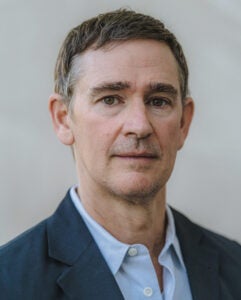 CLANCY MARTIN is the acclaimed author of the novel How to Sell, as well as numerous books on philosophy, and has translated works by Friedrich Nietzsche, Søren Kierkegaard, and other philosophers. A Guggenheim Fellow, his writing has appeared in The New Yorker, New York, The Atlantic, Harper’s, Esquire, The New Republic, Lapham’s Quarterly, The Believer, and The Paris Review. He is a professor of philosophy at the University of Missouri in Kansas City and Ashoka University in New Delhi. He is the survivor of more than ten suicide attempts and a recovering alcoholic.
CLANCY MARTIN is the acclaimed author of the novel How to Sell, as well as numerous books on philosophy, and has translated works by Friedrich Nietzsche, Søren Kierkegaard, and other philosophers. A Guggenheim Fellow, his writing has appeared in The New Yorker, New York, The Atlantic, Harper’s, Esquire, The New Republic, Lapham’s Quarterly, The Believer, and The Paris Review. He is a professor of philosophy at the University of Missouri in Kansas City and Ashoka University in New Delhi. He is the survivor of more than ten suicide attempts and a recovering alcoholic.

